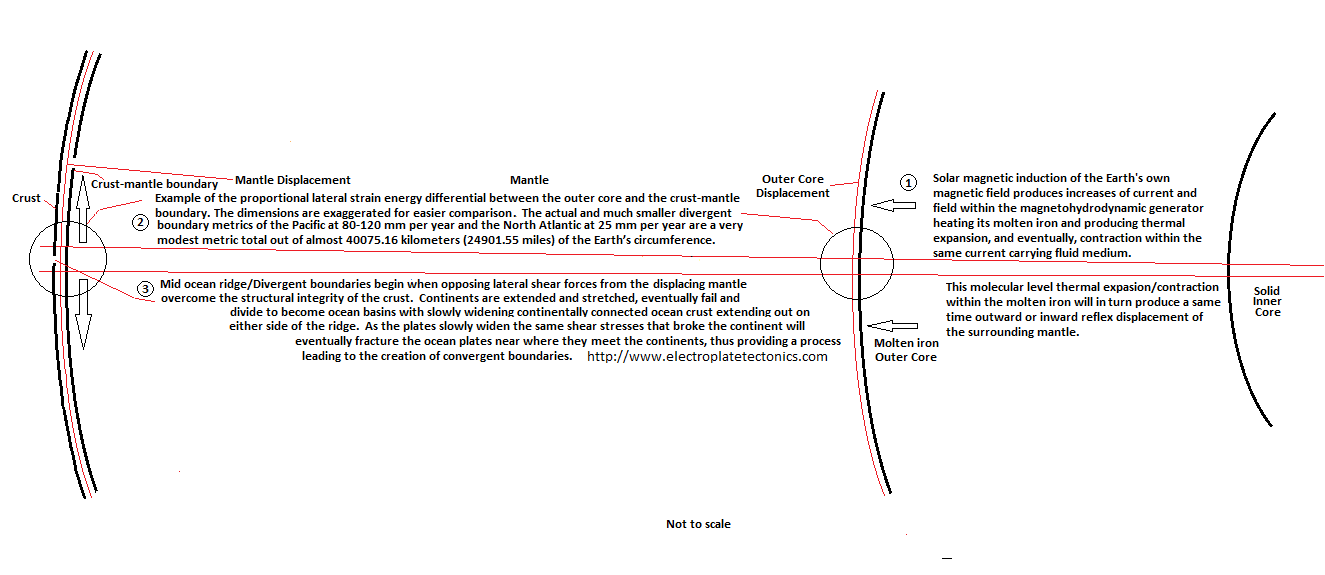-
Posts
978 -
Joined
-
Last visited
Content Type
Profiles
Forums
Events
Everything posted by arc
-
Or "dropping a gas cylinder off of the roof".
-
Drop a gas cylinder off of the roof and see what happens.
-

Why an Airplane Flies (Bernoulli's Principle vs. Newton's Third Law)
arc replied to antimatter's topic in Physics
Talos, I suggest we construct a scale model to study this phenomenon. Ideally, air would be the best choice but we cannot create a scale model of the atmosphere that possesses a graduated decrease going from the highest pressure at its base to nearly zero at the models highest point. But water would work well for a proxy. If we had a clear plastic cylinder 50 meters high containing water, it would have approximately 5 bars of pressure at its base and half that at 25 meters, and thus can effectively graduate the hydrostatic pressures so forth for its entire height. To start with, we will lower a weighted balloon into the empty cylinder, the balloon is ballasted to have a neutral buoyancy at approximately 2.5 bars at 25 meters in depth. Next, we will slowly fill the cylinder from below with water from a measured source. I believe the balloon will not lift off the cylinder’s bottom until the water reaches above 25 meters. Do you agree? When the water reaches 26 meters the balloon will be one meter off the bottom. Do you agree? Do you believe the water moves down to raise the balloon? As water is added the balloon will rise in proportion, this is neutral buoyancy. If the cylinder was full to the top and the balloon was released from the bottom it would rise to the 25 meter level and stop. To do so the water above it will have to move down past the balloon as it rises, I think this detail is over complicating your understanding of this process. For example, when something sinks the water moves past the object. Is this water pushing the object down? This is negative buoyancy. Is there really a void to fill, the pressure is from all directions at any given point and is immediately filled in by the nearest source, molecule by molecule. Does this simple model seem to be in accord with your hypothesis? The water, or air for that matter, moving past the rising (or sinking) object is not doing so to fill the void and thus propel the balloon any more than the air you're car is driving trough is moving your car forward. Any buoyant object is in direct opposition to the hydrostatic pressure surrounding it, and is being moved upwards by the higher pressure from below, and as it does this it is continually moving to a lower pressure state above. In the simplest of terminology, it is being squeezed and is moving in the path of least resistance. As compared to the rather small proportional differences of the balloon and cylinder of the model, the balloon in proportion to the atmosphere is inconsequential to the atmospheres volume. -
I like what you did with that. I might have to borrow it sometime. But the first and last sentences don't fit very well. And the middle is a little awkward. How about; Science resembles a post game commentary on what should have/could have been in our understanding of nature. It dwells on the shortcomings of our experiments, and for those that believe in its usefulness to overcome the difficulties to understand our observations, presumes it can or does influence the later outcomes of the sport, be it the triumphant wins or the tragic losses. And in this regard appears to be going on to a much greater understanding than any previous discipline. The reason for my criticism of philosophy, "And in this regard appears to be going down the same dead end road as astrology." is its inability to constrain its content. To put it another way, it leaks like a sieve. We had a thread recently http://www.scienceforums.net/topic/86097-earth-is-a-living-organism/ It was a rather generic replay of the "we are just the cells of a larger organism - the Earth" concept or something similar. This idea is the result of our culture mixing philosophical ideas, many old with many new, without the benefit of any rigorous boundaries, into still newer hybrid concepts. I have no doubt I would get a large "yes" response if I asked random people on the street if the Earth was/or is like a living organism. Pop culture has been pushing this idea for at least four decades. From Star Wars; http://en.wikipedia.org/wiki/Force_%28Star_Wars%29#Midichlorians The Force is a binding, metaphysical, and ubiquitous power created by Midichlorians, microscopic bio-organic entities. "Without the midi-chlorians, life could not exist, and we would have no knowledge of the Force. They continually speak to us, telling us the will of the Force. When you learn to quiet your mind, you'll hear them speaking to you." ―Qui-Gon Jinn, to Anakin Skywalker[src] Midi-chlorians were intelligent microscopic life forms that lived symbiotically inside the cells of all living things. Now, don't get me wrong. I love Star Wars, always did. But people over time start to naturally mix concepts together, they always have and always will. Star Wars borrowed heavily from eastern culture, religion and philosophy, the jedi, their dress, their fighting style, even their names as seen above, it is a wonderful construct. And then there's the hugely influential movie Avatar, a tour de force of a planet being an organism concept, borrowing heavily from indigenous culture and religious beliefs. Blending all life together with the planet in almost seamless symbiosis. And in fashion with popular culture we have the quasi scientific Gaia movement that borrows heavily from all these philosophies, concepts and constructs to create a hybrid idea for the current sensitivity about the environment. Philosophy may be constrained within academia, but step outside the door and it is a free for all. Science on the other hand has the discipline and rigor to continually check its progress, stay on track so to speak. How do we know this? Because most things made from its efforts work. Airplanes fly, mag trains glide, electric cars roll, GPS works everywhere and so on and so forth. Does philosophy have proof of such rigor? Will philosophy run head on into science's possible invalidation of gaia theory? The question for Philosophy may not be what problems it solves, but how many of the distractions it makes for science is to many.
-
Thank you, I really appreciate that. I said "resembles" a post game commentary, I didn't say it was one. And I said "for those" that believe in its usefulness to overcome the biological nature of human behavior, I was not referring to the academics that you speak of. I was referring to the sizable group that believe philosophy can be used to modify their behavior/and/or environment and by that, change their "karma" in regards to "influencing" their metaphorical "triumphant wins or tragic losses". Which of course it is no more effective at doing than astrology. For a philosopher you sure seem to have missed every metaphorical meaning I put in that "beautifully written" argument.
-
Wow . . . . Ok, I would like to suggest an experiment where we put Syn5 and Popcorn in a room together and see if they spontaneously combust.
-
I'm so glad to hear you say that. I think his work is some of the best examples of a historical narrative, he really is as descriptive as a good fiction writer. Smooth is a word I would use to describe his style . And it is undoubtedly the quality of his narrative style that triggers those impromptu narrations.
-
David McCullough is a national treasure, I would gladly admit the sound of his voice is now indelibly imprinted within me. Do you ever read his works with this somewhat subconscious narrative effect coming into play?
-
Philosophy resembles a post game commentary on what should have/could have been of the human condition. It dwells on our shortcomings through examining our past experiences, and for those that believe in its usefulness to overcome the biological nature of human behavior, presumes it can or does influence the later outcomes of the sport, be it the triumphant wins or the tragic losses. And in this regard appears to be going down the same dead end road as astrology. Anyway, thats my philosophy on philosophy.
-

Why an Airplane Flies (Bernoulli's Principle vs. Newton's Third Law)
arc replied to antimatter's topic in Physics
The extensive history of rigid airships show that an aircraft with or without neutral buoyancy can attain lift from an airfoil regardless of whether it is the crafts airfoil or the air itself that is moving. -
OOPS! I ended that post in haste, and came back and edited without checking for your post. Well, no harm done. I'm really stuck on the outer core/inner core being under incredible pressure and not having the freedom of movement that you are implying. I'm not completely fixed about this but the extreme pressure and the confinement by the magnetic field would seem in line with what is expected. Could a inner core of around 1.7 % of one Earth mass move that much and not be shaking the planet?
-
Yes, the experimentation is the best part of this kind of stuff. You may not need to get to complicated with this. The acceleration that would simulate a gravitational pull on the heavy ball in a thick liquid would need to maintain an adequate acceleration in one direction for a long enough of a time to overcome the fluid's viscosity. With the moon continually orbiting, the direction of force applied on the inner core is continually changing, so it would seem to me the outer core probably would not have time to yield. The tides happen because the ocean only needs to displace the atmosphere, which it does without difficulty. It is the gravity of the Earth, after all, that is the tides primary adversary. But the outer core material would additionally need to simultaneously fill the developing void on the other side of the inner core - outer core boundary, which again requires adequate time and duration of force for the outer core to reconfigure. If the Earth was accelerating in one direction or the moon was pulling the outer core in one direction for an adequate amount of time the outer core, I'm sure, would yield. But that is not happening now or ever will in my opinion. edit to clarify.
-
Robittybob1, I believe Billiards is correct. The outer core may be liquid but it is still subject to the pressure of that depth. The density of that liquid iron would be providing large amount of resistance to counter the effects your hypothesis is claiming. Add to this the internal field of the outer core that surrounds the inner core and provides a magnetic resistance to the inner cores movement, a magnetic bearing if you will. Einstein imagined using acceleration to simulate gravity. Maybe an experiment using a heavy ball in several different viscosities of liquids from a very thick to a medium and then a low to provide an idea of what a highly compressed liquid iron outer core would do when subjected to displacement by an inner core.
-
You answered your own question. Trying to recover your expelled air would require an expenditure of at least an equal amount of energy to compress the air into the secondary tank. Even an empty tank would gradually require more energy from the first tank as it is filled, using the same energy you wanted to use for the robotic systems. Pneumatics need an open system to operate. You could recover some heat from the compressed air though.
-
jeremyjr, I was watching one of your youtube videos and saw the one from 8/22/14, I took some screenshots from it to show here. You can see the balloons pretty clearly. As the balloons rotate the mylar begins to reflect the Sun. You can even make out the wrinkle and the seam in this one. Does this look familiar? That yellow one down at the bottom looks like one of these. Probably this one. http://missionlocal.org/2010/11/balloons-fly-by-law-right-into-electrical-wires/ "balloon sales in California generate nearly $1 billion a year, including sales of peripheral items like gift baskets, flower bouquets and stuffed animals that often are attached to balloons." You are not going to run out of things to watch thats for sure.
-
Don't you realize how jealous you are making the Sun. Giving all this adoration to such an obvious interloper as the Earth. Without the Sun this charlatan Earth would never have coalesced from the primordial solar dust. Try practicing your misguided adulation without its light, heat and gravity. Away with you and your beloved rock to the vapid cold of interstellar oblivion! But seriously, its a rock, a rather nice rock, but still a rock. It has no innate ability to interact with you or any other life on this planet in any manner resembling a symbiotic relationship. It does not have any capacity to interact with the mirid of critters that inhabit its surface. It will digest eons of their skeletal remains though tectonic processes and return their carbon back to the system to be used again. Not because it needs to, but because it consumes its surface layer through plate tectonics. It will process anything that falls into the jaws of a convergent boundary, sand, mud rock, coral reefs, anything. The same thing would occur if you fell into a woodchipper, and I am pretty certain it doesn't care either because its not your mom and neither is the Earth. Would your mother do a thing like this; These are the catastrophic eruption events that are seen in the geologic record; 1. During the eruption of the Siberian Traps at the end of the Permian geologic period around 250 million years ago 1 to 4 million cubic meters of volcanically erupted basaltic lava poured out over the Siberian landscape and covered an area possibly as large as 7 million sq. km., an area roughly equal to the size of Europe. This eruption of flood basalts has been put forth as the cause of the catastrophic end-Permian mass extinction. With more than 90 percent of the planet’s marine species and 70 percent of its terrestrial species becoming extinct. 2. At the end of the Triassic period some 200 million years ago, environmental devastation by almost continuous volcanic activity eliminated half of all species that lived alongside the early dinosaurs, including most of the large amphibians and around one-fifth of marine organisms. Most of the land on Earth was locked up in the Pangaea supercontinent, but this broke apart when the North American and African tectonic plates parted. The separation of the plates created a basin that became the Atlantic Ocean and opened up fissures in the Earth's crust, triggering volcanic eruptions that lasted for 600,000 years 3. The Ontong Java Plateau was formed 125–120 million years ago in Lower Cretaceous Epoch, one of the largest volcanic events on Earth in the last 300 million years it covers an area of approximately 2,000,000 km2 (770,000 sq mi). Almost the size of Alaska with a thickness of up to 30 km (19 mi), the volcanic plateau is mostly composed of flood basalt's from 100 million cubic km of extruded magma that covered approximately 1% of the Earth's surface. It is considered a likely cause of the early Aptian anoxic event, a massive die off in the oceans. Some early research suggested a meteorite impact as a cause but current studies do not support this as a possible trigger. 4. The Deccan Traps were formed at the end of the cretaceous period 60 - 68 million years ago at which time it was estimated to cover 1.5 million square kilometers possibly half the size of India. Most of the volcanic flood basalt erupted near the area of the Western Ghats and continued off and on for maybe 30,000 years forming multiple layers of more than 2,000 m (6,562 ft) thick. It is considered one of the largest volcanic features on Earth. It is considered by some to be the cause of or played a role in the Cretaceous-Paleogene extinction event a.k.a. the K.T. extinction event or K-Pg extinction when large groups of organisms became extinct, most notably the non-avian dinosaurs. I don't think you realize how much in common you have to primitive religions that made human sacrifices when the nearby volcano erupted.
-
Um . . . giving everyone the option to redefine the bodily function of expelling unwanted or unneeded bacteriological waste in regards to using a restroom as "I'm having a baby" may not be the right direction to "go" in this debate.
-
Lance, Strange defined what you are mistaking. Bold mine. Lance, the goal for science is to describe the cosmos, and all that is in it, as accurately as possible. Thus there is the long tradition of classifying what is studied, everything in its proper place, so to speak. When I was a kid there was a show called "The Incredible Machine" http://en.wikipedia.org/wiki/The_Incredible_Machine_(film) The Incredible Machine, which included some of the first pictures taken inside the human body and presented on film, using some of the earliest film that medical researchers had taken inside the human digestive tract and bloodstream. It ranked as the most-watched program in Public Broadcasting Service until 1982, when it was overtaken by The Sharks. If animals were classified as machines would this help in their understanding anymore than is already known? It may be novel to re-categorize biological systems to highlight their amazing adaptations but would it really help in the study of the natural world and all that is in it? Life through adaptation has taken advantage of mechanical concepts. From simple appendages to more complex mechanisms like pumps, levers, bellows, pipes, wings, the list goes on and on. The Earth has electro-mechanical systems from its magnetic field generator to its plate tectonics, the oceans drive thermo-mechanical weather systems like hurricanes and El Nino. And huge volumes of water are moved around the globe in the great ocean conveyor. Even the stars and our own Sun could be described as massive nuclear driven electro-mechanical machines. If all these systems; cars, animals, planets, anything that flies from bugs to birds to bats to planes, stars, anything that crawls, ships, anything that swims etc. etc. can be re-classified to one single category called "Glorious Machines" why don't we do it? Probably because it would not add anything to understanding the cosmos and all that is in it. There is a need to have a logical order of things to efficiently study such massive systems containing what seems to be endless discoveries down to the minutia. What would happen if overnight your grocery store reorganized the shelves according to price. Aisle 1 bottom shelf is the cheapest item in the store, aisle 30 top shelf all the way at the end the most expensive. Wouldn't that be helpful.
-
Maybe this will help. There are planets like Mars, Venus, Mercury and undoubtedly countless others across the cosmos that do not have life clinging to, let alone thriving, anywhere on or within the planet. They are just rocks in orbits around a star. Earth on the other hand is ideally suited and situated to foster and maintain life. I think all could agree with this so far. The Earth's magnetic field is to a large degree responsible for this "oasis in the desert". Earth also orbits its star in what is described as a Goldilocks orbit, one being just right. Rocks seem to have a uncanny ability to attract life if the right conditions exist. In water environments algae will find a niche on a rock out of the harsh stream flow , the "shady side" so to speak. Or even up on the surface a "little world" can find a home on a rock in a Goldilock location; https://www.google.com/webhp?sourceid=chrome-instant&ion=1&espv=2&ie=UTF-8#q=lichen A lichen (/ˈlaɪkən/ or /ˈlɪtʃən/) is a composite organism that emerges from algae or cyanobacteria (or both) living among filaments of a fungus in a mutually beneficial (symbiotic) relationship. The whole combined life form has properties that are very different than properties of its component organisms. You notice though the rock is not considered part of the lichen combined life form, because they would undoubtedly grow on other surfaces if the rock was not available. This rock we live on is just that. An ideally suited rock just the right distance from a star, that is itself also of the right size. A civilization with enough technical know how and where withall could build one of suitable materials. An artificial magnetic field and all, and it too would be a home but not the life that lives within its shelter away from the harsh stream flow outside its walls..
-
I doubt this can be simplified that much. Imagine the dynamics involved in aviation. The range in speeds from takeoff to supersonic and the pressures that are involved everywhere in between these two boundaries. Materials change and respond greatly due to the degree of energy that is being transferred. A jump off a dock as compared to one from a high bridge for example, the same water, two very different results. Materials can stiffen with increasing pressure while others will deform and still others will disintegrate. The considerations of varying temperatures and pressures for each material and their VERY particular and unique dynamic interaction with all other materials . . . . well, just staggers the mind.












